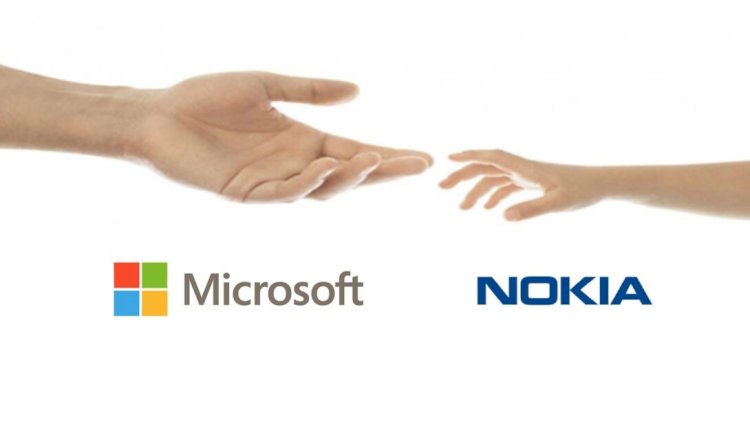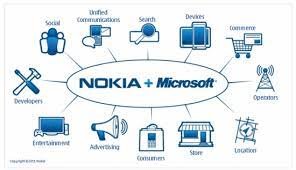The Rise, Fall, and Rebirth of Nokia: Understanding Microsoft's Acquisition and Subsequent Sale
In the realm of technology and innovation, the story of Nokia is one that resonates deeply with many. Once a dominant force in the mobile phone industry, Nokia experienced a series of highs and lows, culminating in its acquisition by Microsoft in 2014, followed by its subsequent sale just a couple of years later. The tale of Nokia's journey provides invaluable insights into the dynamics of corporate strategy, technological disruption, and the ever-evolving landscape of the digital age.
The Rise of Nokia:
Nokia's ascent to prominence is a testament to its visionary leadership, relentless innovation, and unwavering commitment to quality. Founded in 1865 as a pulp mill in Finland, Nokia transitioned to the telecommunications industry in the 1980s, laying the groundwork for what would become its most iconic product: the mobile phone. With the launch of the Nokia 1011 in 1992, the company established itself as a pioneer in the mobile telecommunications sector, setting the stage for its meteoric rise to dominance in the years to come.
Throughout the 1990s and early 2000s, Nokia continued to push the boundaries of mobile technology, introducing a myriad of groundbreaking devices that captured the imaginations of consumers worldwide. With its robust lineup of feature-rich phones, Nokia commanded a staggering market share, becoming synonymous with reliability, durability, and innovation in the mobile industry.
The Fall from Grace:
However, Nokia's dominance began to wane with the advent of smartphones powered by operating systems like iOS and Android. While the company initially attempted to compete in this new landscape with its Symbian operating system, it soon became apparent that Nokia was struggling to keep pace with the rapid advancements in smartphone technology. Missteps in product development, coupled with a failure to anticipate shifting consumer preferences, led to a precipitous decline in Nokia's market share and financial performance.
As competitors surged ahead, Nokia found itself in dire straits, grappling with declining sales, diminishing brand relevance, and internal turmoil. In a bid to revitalize its fortunes and regain lost ground, Nokia announced a strategic partnership with Microsoft in 2011, aiming to leverage the software giant's expertise in software and services to bolster its smartphone offerings. However, this partnership ultimately paved the way for Microsoft's acquisition of Nokia's Devices and Services division in 2014, marking the end of an era for the Finnish company.
Microsoft's Acquisition:
Microsoft's decision to acquire Nokia's handset business was driven by a desire to strengthen its position in the mobile market and expand its ecosystem of devices, services, and software. By integrating Nokia's hardware capabilities with its own software prowess, Microsoft sought to create a seamless and compelling user experience that could rival the offerings of industry leaders like Apple and Google.
Under Microsoft's stewardship, Nokia's smartphone division was rebranded as Microsoft Mobile, with the aim of accelerating innovation, driving synergies, and delivering value to customers. However, despite initial optimism surrounding the acquisition, Microsoft soon encountered numerous challenges, including integration issues, internal cultural clashes, and tepid consumer reception to its Lumia smartphones.
The Subsequent Sale:
Just two years after acquiring Nokia's handset business, Microsoft announced a strategic shift in its mobile strategy, signaling the beginning of the end for its ill-fated foray into the smartphone market. Citing mounting losses and a lack of viable path to success, Microsoft announced plans to streamline its operations and refocus its efforts on software and services, rather than hardware.
In 2016, Microsoft sold the majority of its feature phone business and licensing rights to HMD Global, a Finnish startup comprised of former Nokia executives, marking the end of Microsoft's tumultuous venture into the mobile industry. The sale allowed Microsoft to exit the hardware market gracefully while enabling Nokia to reclaim its iconic brand and embark on a new chapter of innovation and growth.
The Rebirth of Nokia:
Following its separation from Microsoft, Nokia has undergone a remarkable resurgence, reclaiming its status as a formidable player in the telecommunications industry. Under the leadership of CEO Rajeev Suri, Nokia has refocused its efforts on network infrastructure, 5G technology, and strategic partnerships, positioning itself as a leading provider of end-to-end networking solutions for telecommunications operators worldwide.
Additionally, Nokia has capitalized on the burgeoning demand for digital transformation solutions, expanding its portfolio to include offerings in areas such as cloud computing, cybersecurity, and Internet of Things (IoT). Leveraging its rich heritage of innovation and engineering prowess, Nokia is once again at the forefront of shaping the future of connectivity and driving meaningful societal impact.
The story of Nokia's acquisition by Microsoft and subsequent sale serves as a cautionary tale for companies navigating the complexities of technological disruption and industry upheaval. While Nokia's journey may have been fraught with challenges and setbacks, it also embodies resilience, adaptability, and the enduring spirit of innovation. As Nokia continues to evolve and redefine its role in the digital landscape, one thing remains clear: the legacy of Nokia will endure, serving as a timeless reminder of the transformative power of human ingenuity and the enduring quest for progress.


























